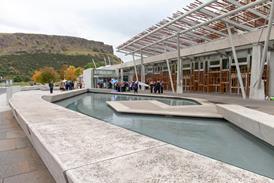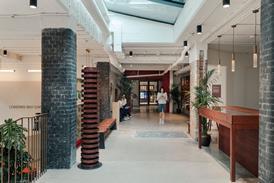The Grenfell fire will have a profound impact on everything from building design and procurement to our attitudes towards tall buildings and social housing provision, says Martyn Evans

Until the public inquiry reports we will not know for certain what caused the fire at Grenfell Tower. As we wait, debate is turning to wider issues that the tragedy and the experience of those affected raise about how we design, procure and populate residential buildings.
The design and build procurement process has long been a subject of debate in our architecture, development and construction industries. When the original client/design team is so far away from the delivery of the final product could ultimate responsibility for the safety of a building’s residents somehow be lost in the complexity of a process with so many disconnected stages? Is the moral ownership of a project somehow lost in a process that puts residents so far down a linear delivery string that they are almost invisible to the original creators of a project?
Some have suggested that in a London borough with huge income differentials, social housing residents are somehow invisible to policymakers when safety concerns are raised. Is this fuelled by the current S106 process that puts the delivery of social housing in the hands of private sector developers whose central responsibility is to their shareholders and not to the common good? All the right-thinking public policy in the world is for nothing if the power imbalance in the planning process means that the social element of a mixed development is treated as less important, or something that might have a negative impact on the ability of private housing to be sold for maximum gain (in order to facilitate the provision of the social housing…). Those calling for us to re-think how we treat social housing in the wake of Grenfell are questioning whether the very nature of our approach to building for a mix of tenures might have at least had a direct effect on the response to those affected in the immediate aftermath, let alone whether it is more likely that social housing is inherently unsafe.
These problems are a direct consequence of the almost complete disappearance of local authorities in our country as providers and custodians of mass housing
And what of our response to building high? One residential developer I spoke to last week told me that the towers they are building are effectively on hold while they review not just the safety provisions, building materials and regulatory compliance of their designs, but whether we might lose confidence in the very concept of tall residential buildings. The debate in London about whether and where we should be building high has focussed mostly on the impact on the city’s skyline and the ground treatment around tower blocks. It hasn’t occurred to us that the consequence of an awful tragedy like Grenfell might be that we question not just how we regulate for fire safety in the future but whether people will ever trust that tall buildings can be completely safe.
And then there’s the ability of the local council to respond quickly to the desperate need to find the surviving families a place to live. A large number of them are still in temporary hotel accommodation and we are hearing stories about how many of them have rejected offers of new homes that LB Kensington & Chelsea are scrambling to procure from the private marketplace. There are many reasons for this: they feel connected to their existing communities; they don’t want to move their children from their schools; they are concerned that the private housing LBK&C are offering does not give them the security of tenure they had in their original homes. These problems are a direct consequence of the almost complete disappearance of local authorities in our country as providers and custodians of mass housing.
As the facts about the fire emerge over the coming months we will learn how our industry and the way we work will change. But we also have a responsibility to ask some fundamental moral and political questions about how we as private and public sector professionals come together to build places for people to live.















15 Readers' comments